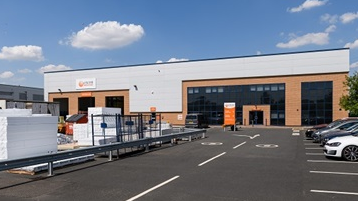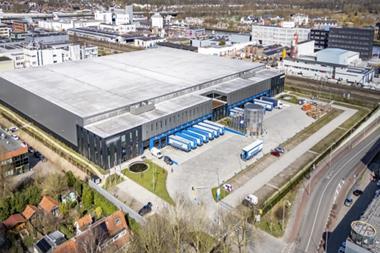By collaborating with developers, investors, and the supply chain, we can better address sustainability challenges, writes Graham Reece
Many of the warehouses under development today could reasonably be described as ultra-sustainable.

Far from the draughty cast-iron boxes in industrial estates that the logistics sector was previously charactered to be, some – set in landscaped surroundings teeming with biodiversity – are as warm, comfortable and attractive environments to live in as a newbuild apartment (particularly in times of high energy costs).
This has come from a meeting of interests between occupiers, developers and investors – all of whom, for different reasons, are committed to sustainability.
The progress that the sector has made in the past few years, never mind the past decade, is genuinely astonishing and is an example to the rest of the real estate industry.
No less committed to sustainability are the material manufacturers, suppliers and contractors throughout the wider supply chain – but in many of these areas within the world of industrial and logistics property, improvements are much harder to come by.
That’s why, increasingly, the sector will need to work out a more collaborative way to drive forward development sustainability if it has any hope of achieving the goals it needs to meet.
The challenge today: knowing where to go
One trend in approach we’re seeing several companies adopt is in undertaking materiality assessments – identifying the likelihood and scale of impact that a company’s direct operations has on the environment, as well as the indirect effects.
The results identify the material and non-material activities, such that measurement and mitigation strategies can be applied and focused in areas of greatest need/reward.
This is a sign of the sector increasingly seeking to do better
The problem? For most organisations, is working out what the most appropriate targets– determining the areas in which you can have the greatest impact – are in the first place.
In the real estate development sector, in addition to carbon and energy reduction targets (Trammell Crow Company, for example, aims to lessen the carbon footprint of its schemes development-on-development), you see the likes of biodiversity improvement, green building standards, and targets for electric vehicle (EV) charging facilities and renewable energy production increasing scheme after scheme. That’s all realistic.
However, when it comes to supply chain services and operations, it is much harder to define realistic targets. The environmental impact of a business’ services and ancillary operations relies on robust self-assessment, which can vary significantly from business to business, thus making target setting less standardised or quantifiable.
However, by adopting a truly partnership approach that enables developers, investors and the wider supply chain, we have a much better chance of tackling the sustainability challenges.
Preparing for electric and the return of the market
One of the biggest steps companies can take to improve the sustainability of its supply chains is by supporting logistics firms to more easily switch to EVs and alternative fuels. For businesses with large fleets, moving to EVs could make a huge dent in their carbon footprints.
Providing sufficient on-site EV charging stations – for both employees’ vehicles and HGVs – would go a long way to supporting the supply chain make this shift. Even if the demand is not huge right now, it is inevitable and forward-thinking developers (and their investment partners) are going to have a competitive advantage by installing them.
Another significant step that developers and investors can make to support new real-estate product becoming more sustainable – in the environmental, social and indeed economic senses of the word – is greater partnership working.
The stop-start nature of the industry, particularly amidst the past few years of rocketing labour and material costs and capital market adjustments, has been deeply damaging to many individual contractors and the sector as a whole.
With the market seemingly heading towards a period of greater inflation control and further interest rate reductions, developers will want to press ‘go’ on their projects.
Preparing projects therefore– particularly in joint venture partnerships with investors – that clearly define environmental targets and objectives, penetrating through the supply chain is going to be essential to getting the ‘green light’.
Governments’ role in supporting sustainability
Of course, the industry can’t do it all itself, although it has led by example to date. National and local governments’ role in this transition is crucial.
To create a more sustainable future for supply chains, governments must push for, and speed up, the reduction of environmental impacts across the sector – this can be implemented through a mixture of incentives and penalties, making sure companies are not just encouraged but required to adopt greener practices.
The power of working together
As the logistics sector continues to change and evolve, it’s clear that collaboration across the supply chain is more important than ever.
Developers, investors, contractors, manufacturers and suppliers all need to work together to push the limits of what’s possible in order to, firstly, minimise any environmental deficit created by a new development and, eventually, to eliminate this altogether and aim to enhance the environment in all respects.
We’re just getting started on the journey toward ultra-sustainable warehousing. While there are definitely challenges ahead, the potential for innovation and progress is huge.
By working together and striving for higher standards, the logistics real estate sector can play a leadership role in decarbonising the 21st century world that the sector is so vital in sustaining.


















